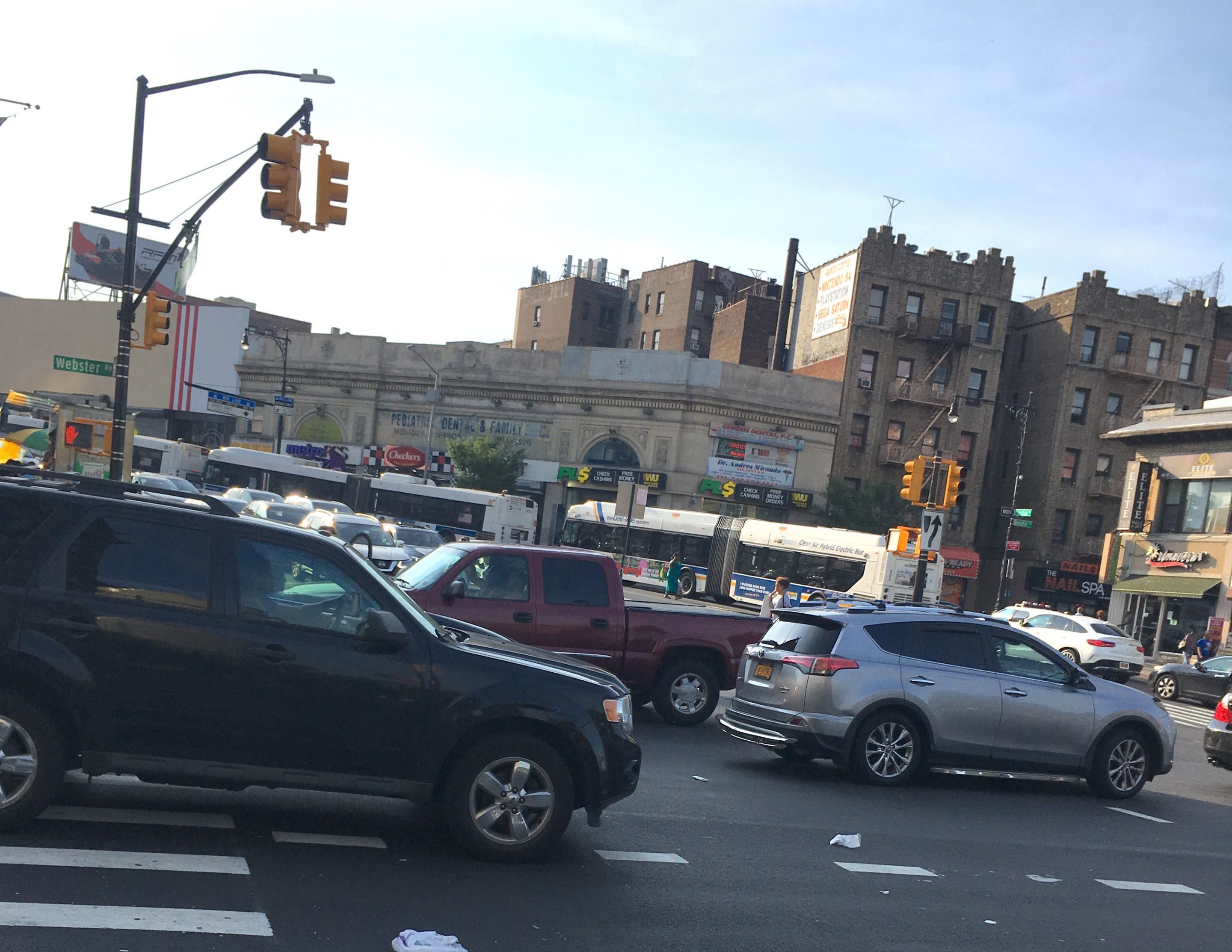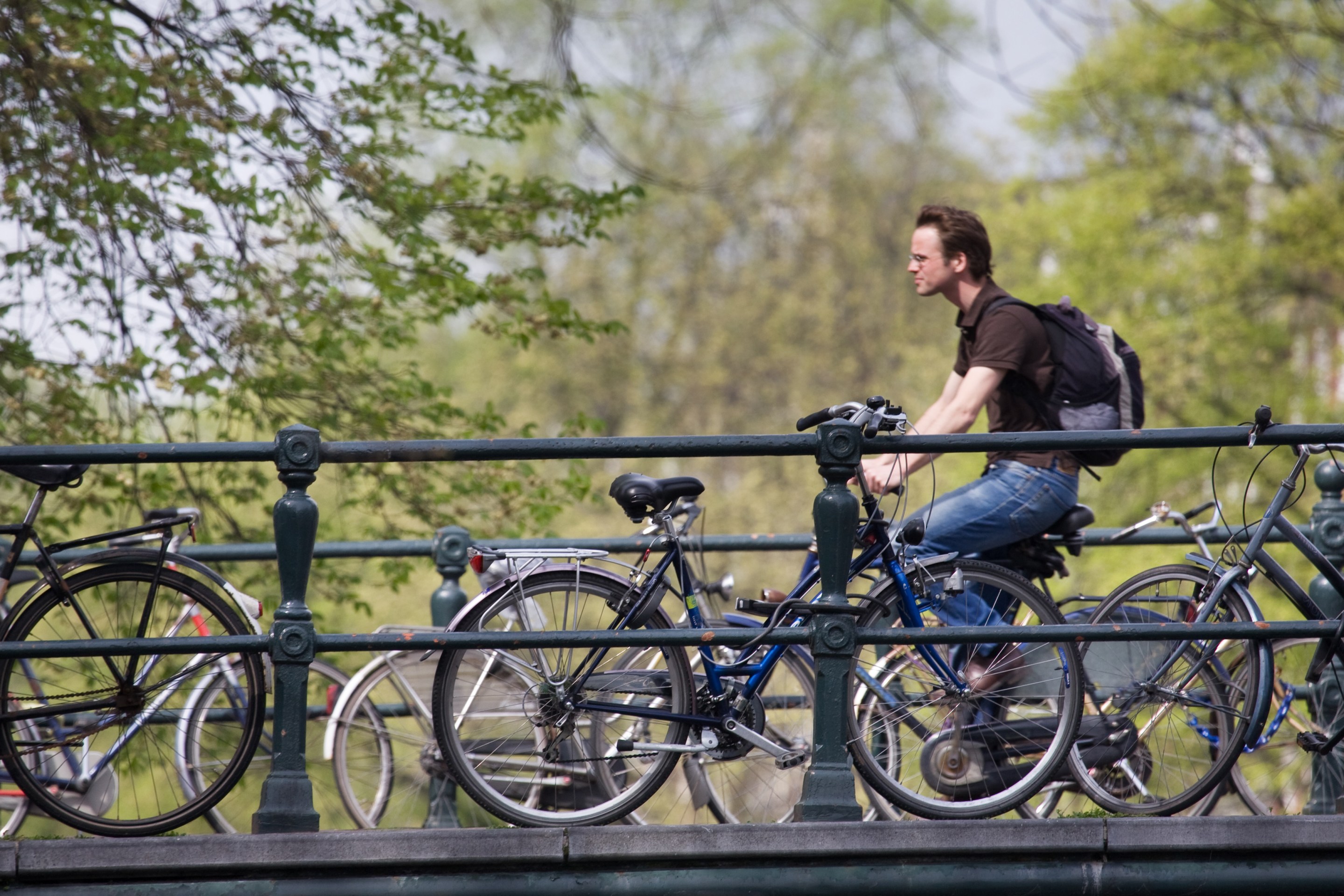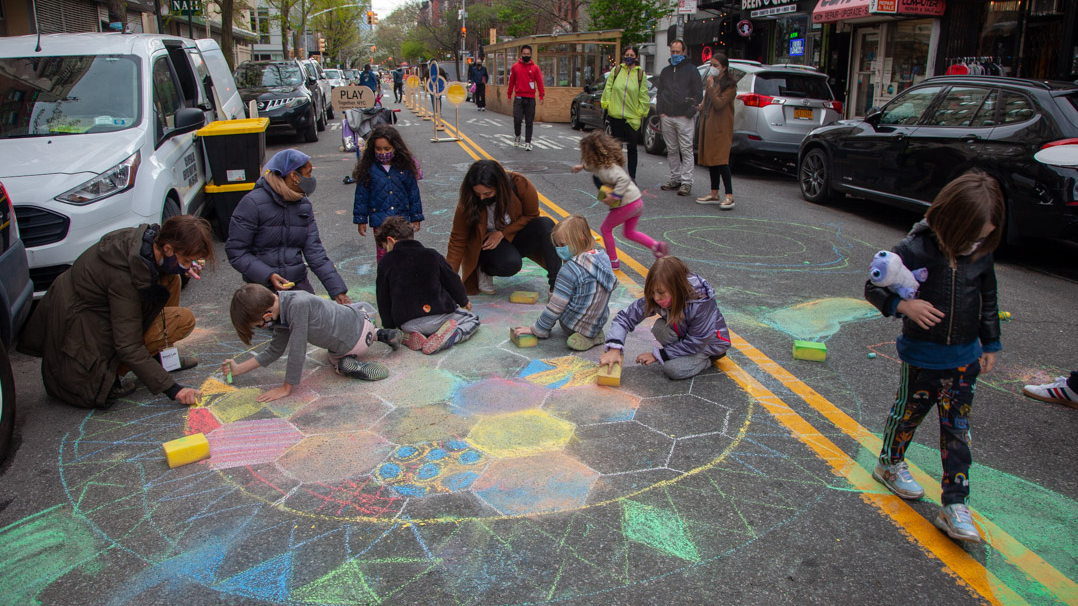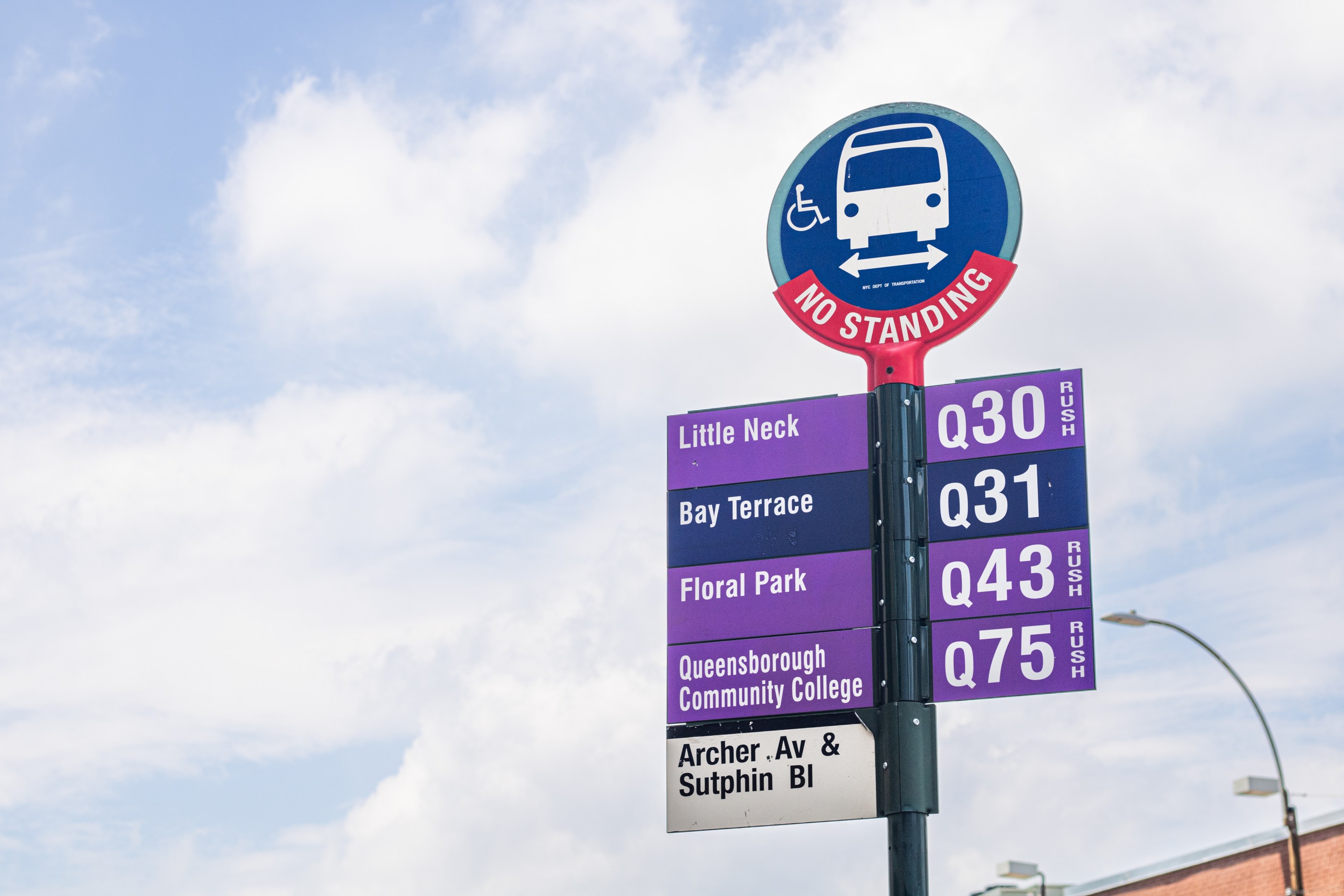Here we slow again.
The Department of Transportation wants to speed up buses along notoriously congested Fordham Road in The Bronx, but the agency admitted last week that it "does not have a proposed design for the corridor" and prefers to wait until it receives input from a "community advisory board" of elected officials, community groups and others, plus the local community boards.
Judging by past timelines, that process could take another year before the Bronx's long-suffering bus riders get relief.
The good news: On Jan. 14, the DOT made a full-throated argument [PDF] that changes need to be made along Fordham Road, which serves nearly 100,000 daily riders with connections to five subway lines and three commuter lines on nine bus routes, including the Bx12 SBS, which was the first Select Bus Service route when it was created in 2008.
That singular improvement raised bus speeds by 20 percent virtually overnight, ridership by 10 percent and retail sales by 71 percent (far above the 23 percent borough-wide average), according to the DOT. The Bx12 remains the second-busiest bus line in the city, serving 13.7 million trips a year.
But in 2014, despite the dedicated curbside bus lanes, speeds started plummeting — and with them, ridership. The reasons are obvious: surging use of Uber and Lyft (which drop off people in the bus lane), increased truck traffic due to the increase in online purchases, the lack of on-bus cameras to enforce the bus lane's car restrictions, and continued failure of businesses to better schedule their deliveries (only 20 percent of businesses on Fordham Road told DOT that they are able to determine when their deliveries will arrive).
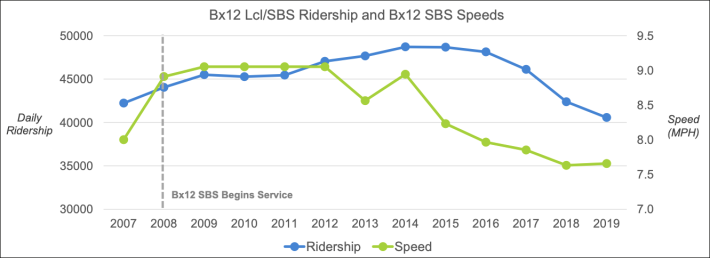
"Observations and data show that existing curbside bus lanes are frequently blocked," the DOT said in its presentation.
Efforts to improve bus service along Fordham Road between the Major Deegan Expressway and Boston Road were buoyed by a survey commissioned late last year by the Association for a Better New York, which found broad support for bus improvements not only from riders, but also from drivers:
- 79 percent of residents surveyed in the affected neighborhoods support changes to city streets that can make buses faster and more reliable
- 89 percent support improving existing bus lanes
- 66 percent support additional bus lanes
- 70 percent support a busway
- 72 percent of non-bus riders support improving the existing bus lanes on Fordham Road.
And, most telling, when respondents were presented with the hypothetical, "If buses along Fordham Road were faster and more reliable..." 67 percent of existing riders said they would use the bus more often and 28 percent of non-riders said they would be more likely to use them."
And DOT's own survey can be used as a cudgel against business owners who — if past busway projects are any indication — will complain that their customers can't get to their stores if parking or car access is limited: 86 percent of shoppers on Fordham Road told the DOT that they arrived on foot, on a bus, or on a train.
The DOT's presentation last week came about 14 months after Cecil Brooks and John Halpin, members of the Transportation Alternatives Bronx committee, put Fordham Road on the citywide agenda with a Streetsblog op-ed demanding a 14th Street-style busway along the Bronx's signature east-west strip. Their story presented Fordham Road's problem in a nutshell:
In the half mile stretch between Grand Concourse and Webster Avenue, we marched through an obstacle course of speeding cars, red-light violations, illegal parking in bus-only lanes, and parents pushing strollers across six lanes as cars belched fumes and honked angrily. The many irregular intersections dumping traffic into Fordham Road would boggle those accustomed to Manhattan’s orderly street grid. We do not have to settle for this.
This week, Halpin called a full, car-free busway "a no brainer given the vast majority of neighborhood residents and shoppers report getting around via public transportation."
"The high demand for curbside space for loading and unloading suggests that we need to radically reallocate space away from private vehicles to benefit bus riders and merchants who need loading space," he added.
A busway, the DOT agrees, is an issue of basic equity. Sixty-two percent of households served by the route don't have access to a car, and 71 percent of residents commute on public transit or under their own power. The median income of the area is $40,400, or 33 percent lower than the citywide median of $60,800. And 81 percent of the residents are Black of Latino.
Pollution from all the traffic — and the road violence it causes — also disproportionately affects residents of the area. In just the 2.5 miles of Fordham Road in question between January, 2014 and December, 2018, there were 3,698 crashes (more than two per day), causing 1,865 injuries and the death of three pedestrians. Life expectancy is lower and asthma rates are higher in that part of The Bronx.
Now, the bad news: The DOT has not indicated what it wants on Fordham Road beyond improving bus speeds, and will defer to input from the community advisory board to "guide the project before, during, and after implementation."
"DOT does not have a proposed design for the corridor," the agency said in the presentation, which rounded up the full agency toolbox (see graphic). "Additional community outreach will be conducted with community boards and ... online surveys, virtual meetings with stakeholders, walk-throughs," the DOT said.
That doesn't mean the agency won't get it right. It only means the agency won't get it done quickly.
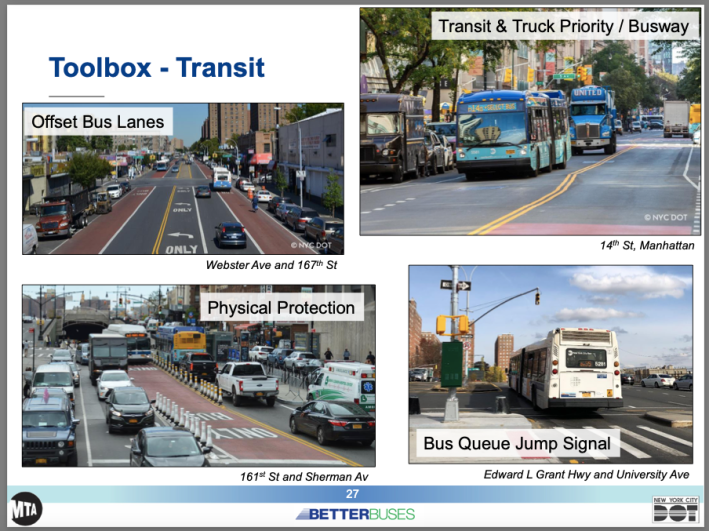
The process by which the DOT create bus lanes continues to be fraught. In June, after the MTA called for 60 miles of bus lanes, Mayor de Blasio promised to build 20 miles of new busways and dedicated bus lanes by the end of 2020, and managed to get 16.3 miles done. Of the busway projects, only a short stretch of Jay Street in Downtown Brooklyn was converted to bus-only use. A busway in Flushing was tied up for months in protests and a lawsuit by pro-car business interests (it finally began on Tuesday, though a lawsuit is pending). A busway on Fifth Avenue was abandoned. And a long stretch of dedicated bus lane on Hylan Boulevard in Staten Island was truncated.
Ben Fried, the spokesman for Transit Center, hopes that Fordham Road won't be ground up in the sausage-making process.
"Fordham Road was the first SBS project — it's where they debuted the whole concept," Fried said. "DOT can set a precedent for how they improve these kinds of corridors. I'll leave the question of how to do it to the professional designers, but this is a street where the DOT should be thinking maximally."
The DOT is clearly capable of that kind of next-gen thinking, Fried said, mentioning the recent bus priority corridor on E.L. Grant Highway, which created a dedicated, center-running bus lane that can't be blocked by car drivers.
"That's a great example of what the DOT can do," Fried said. "Fordham Road is one of the most important bus corridors in the city — definitely top five and maybe top one or two. It needs to be like a subway ride."
The DOT said it is using its normal process.
"As with all projects, DOT collaborates closely with local stakeholders," said agency spokeswoman Alana Morales. "Due to the importance of the Fordham Road corridor to the entire borough and city, DOT is in the process of gathering data and feedback from local stakeholders before developing the design. At the Jan. 14 presentation to the community advisory board, DOT presented a toolbox of potential design options. Given the varying conditions of the corridor segments, DOT will evaluate a range of design alternatives to be analyzed and brought forth to the CAB for additional feedback."
